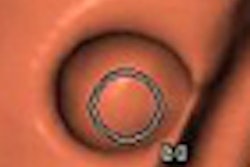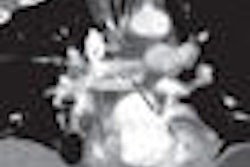Dear CT Insider,
Perfusion imaging is emerging as a good way to answer a fistful of diagnostic questions in CT. But there seem to be as many ways to do it as there are potential indications.
In this issue's Insider Exclusive, Dr. Patrick Rogalla reviews some of his group's methods for obtaining diagnostic images while keeping an eye on the dose. The goal, he said, is to integrate the perfusion and diagnostic scans into a single acquisition. Learn more by clicking here.
In other news, read about our coverage of what appears to be a series of CT radiation overdose incidents at Cedars-Sinai Hospital in Los Angeles. The facility is accused of exposing patients to so much radiation that their hair fell out. The Food and Drug Administration is investigating, and a lawsuit was filed. This issue also brings to mind the sad story of the California toddler who was scanned 151 times over the course of an hour.
In its own way, last week's publication of the Medicare Physician Fee Schedule for 2010 also disturbed the imaging community due to the big payment cuts planned over the next four years. While virtual colonoscopy and radiation oncology were largely spared, cardiac imagers are decrying a 36% cut in myocardial SPECT reimbursement and significant cuts in echo. In positive news for CT providers, the U.S. Centers for Medicare and Medicaid Services (CMS) assigned what appear to be logical base rates for the four new current procedural terminology (CPT) codes covering coronary CT angiography. Cardiac PET payments increased 17%. Click here for the rest of the story.
In a study that won't shock anyone into cardiac arrest, researchers from the Netherlands found that cardiac CT was more often diagnostic than treadmill exercise. And unlike SPECT, cardiac CT also identifies occult disease in type 2 diabetics.
Swine flu, another scary topic ripped from the headlines, has a role for CT, according to two studies. One finds that CT can aid early swine flu diagnosis, while another CT study demonstrates an acute pulmonary embolism (PE) risk in swine flu patients. CT has largely supplanted ventilation/perfusion scanning for PE detection, another study reveals.
Also in the chest, the new TNM classifications for lung cancer need some fine tuning, say researchers from Houston. Readers using computer-aided detection to find lung nodules did better when they didn't spend too long at the task, concluded a team from Stanford University in California. Few reactions were seen in either MRI or CT when using contrast, another study concludes.
Last but not least, a new study finds that CT is worth the radiation dose for traumatic C-spine injuries. And an antioxidant formula for reducing the damaging effects of radiation is making its debut in the U.S., with additional studies planned stateside and in Europe.
We invite you to scroll down for the rest of the news in your CT Digital Community -- and to keep an eye out for our preview of key CT presentations at the RSNA meeting later this month in Chicago in our Road to RSNA 2009 special section.



















